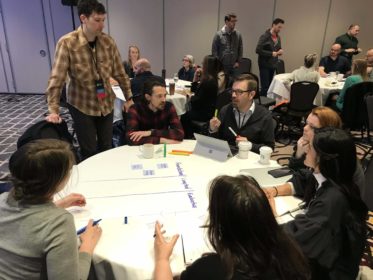Blink researchers have created journey maps for a wide variety of domains and contexts, from consumer-focused travel experiences to the internal processes of financial organizations. Journey maps typically communicate key aspects of a customer's experience, including the customer's goal, the stages they progress through to accomplish their goal, the actions, behaviors, mindset, and emotions throughout each stage, and the pain points that occur as the customer completes the journey. Armed with this information and empathy for their customers, organizations can use journey maps to dramatically improve the experiences and touchpoints that customers have with their product or service.
Customer Experience Journey Mapping
Customer experience journey mapping is the process of identifying and visualizing the process a customer or user goes through in pursuit of a goal. Journey maps often focus on the channels and touchpoints a customer has with a product or service over time, allowing organizations to identify opportunities to improve or enhance the customer's experience at each touchpoint.
Interested in visualizing your customer's journey?
Say helloRelated Content

15 minutes
The fine art of creating experience maps
Here are more details about how we think about target users and their engagement with products to inform experience maps.

14 minutes
9 Tips for Bringing Mobile UX to the Enterprise
If you—a business analyst, solutions architect, IT project manager—have limited UX resources or experience but need to design a mobile experience for your internal applications, we’re here to help with nine handy tips.

14 minutes
Eight Tips For UX Projects In Complex Domains
How do you provide value quickly to your client or to your product team? How do you confidently argue for findings and steer designs when you are new to that industry’s domain? Below I share a few tips from Sarah Barrett, a few colleagues, and myself.